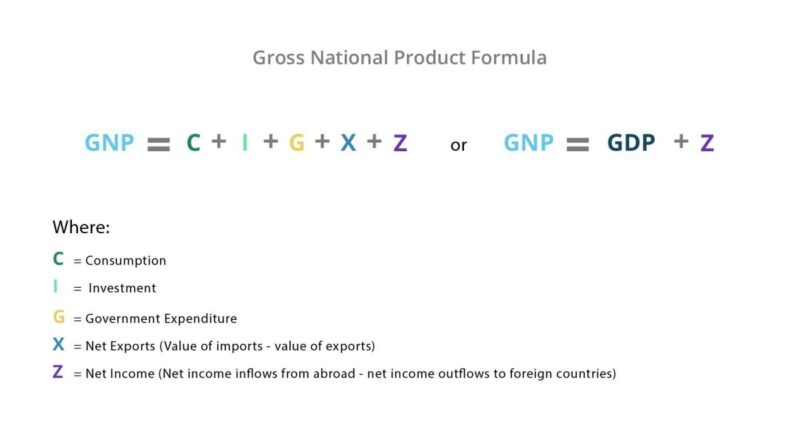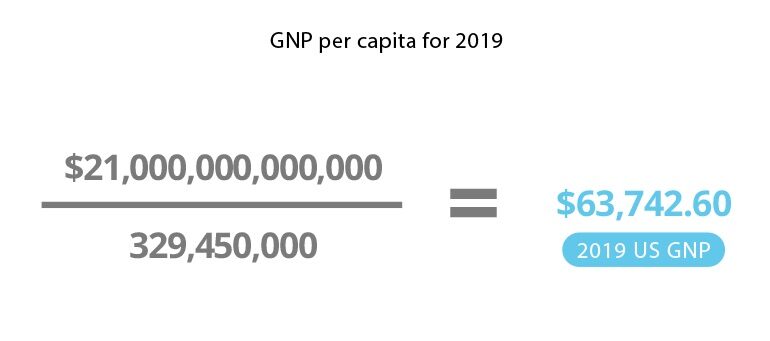What Is GNP?
Gross national product (GNP) is the sum of all domestic and foreign output generated by citizens of a given country. It can be measured by spending or by income. GNP includes activities by citizens and companies abroad, but it excludes activities by foreigners within the country.
GDP vs. GNP
Gross domestic product (GDP) is another common metric that’s used to measure the economic activity of a country. The main difference is that GDP is limited to activity within a country’s borders. The simplest way to understand the difference between GDP and GNP is with the following breakdown:
%20vs.%20Gross%20National%20Product%20(GNP).jpg)
How to Calculate GNP
Gross national product measures the total value of all goods and services produced by a country's residents, regardless of production location.
GNP Formula
The GNP formula consists of gross domestic product plus income earned by foreign residents living abroad (minus domestic income generated by non-residents).

Example of GNP
Assume that Country ABC spends a total of $100 million on consumption, $75 million on investments, and $200 million on government expenditure. Additionally, the country spends $50 million on imports and sells $25 million of exports.
Country ABC also has multiple citizens and businesses in foreign countries which generate another $150 million in income. The foreign businesses that operate within the country earn $50 million (which is sent back to their home countries).
What Is Included in GNP?
Using the full form of GNP (above), we can calculate Country ABC’s GNP as follows:
GNP = C + I + G + X + Z
Where:
Consumption = $100 million
Investments = $75 million
Government expenditure = $200 million
X [Net Exports (Value of exports - value of imports)] = -$25 million
Z [Net Income (Net income inflows from abroad - net income outflows)] = $100 million
GNP = 100m + 75m + 200m + -25m + 100m = $450 million
Therefore, we can conclude that Country ABC’s GNP is $450 million.
What Is GNP Per Capita?
GNP per capita reflects a country’s average productivity per person. It is calculated by dividing a country's GNP by its population. This metric is useful for country-to-country comparisons since it reflects the economic usefulness of a country relative to its population.
Factors like population size, productivity, and resources can affect overall GNP, so putting it into “per capita” terms allows for a more accurate comparison between countries.
GNP Per Capita Formula
To calculate GNP per capita, the formula is extremely straightforward:
GNP Per Capita = GNP/Population
Example of GNP Per Capita
At the end of 2019, the United States’ GNP was $21.85 trillion and its population was 329.45 million. Using the formula above, we can calculate the GNP per capita for 2019:

Therefore, we can conclude that the 2019 US GNP per capita was $66,322.66.
Why Is the Concept of GNP Important?
Unlike GDP (which focuses on the output created within the borders of a country), GNP measures the output generated by its citizens, regardless of their location. Since residents currently have greater opportunities to earn money from both domestic and foreign sources, GNP is a more accurate indicator of average productivity.
However, the two measures are often used together. A large gap between GDP and GNP indicates significant involvement in international trade and finance – or that a large proportion of citizens live and work abroad. A small gap likely indicates that most output is generated within the country’s borders.




